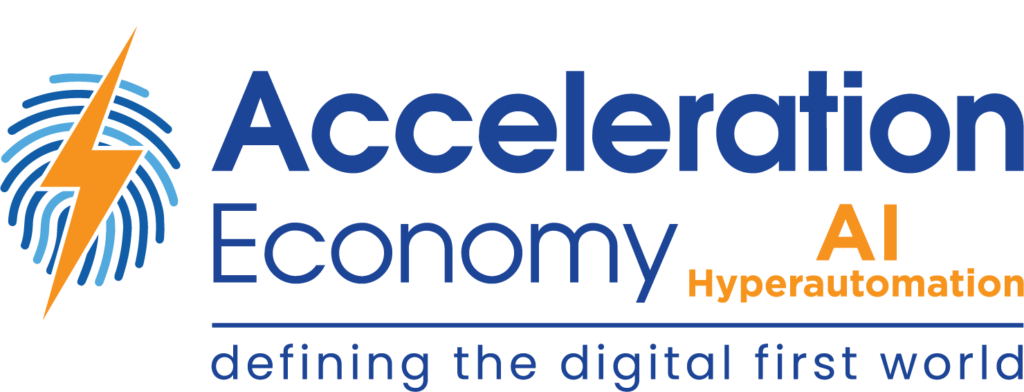As technology evolves, people evolve around it. New generations that are born into new eras have different perspectives and expectations than previous ones. Understanding this dynamic has been critical for organizations that have stakeholders in all age groups.
With OpenAI’s recent release of GPT-4, the proto-artificial general intelligence (AGI) system, it’s fair to say a new era is here. And it’s time to revisit. In this analysis, I extend the concept of digital native (as opposed to an analog native) to include a new category, the AI native, and what that person might mean for your organization and the workforce more broadly.
Digital Native vs Analog Native
Before diving into the AI native idea, it’s useful to look at how the digital native, someone like me who grew up with digital technology and only knows a world that has the Internet, compares to the analog native, who grew up before computing and the Internet became mainstream.
Many analog natives have adapted to digital technology and are in the same boat as most digital natives in terms of productivity, awareness, and adoption. But there are some crucial differences.
For a digital native, the baseline for what is normal is digital and we look there first for getting food, meeting friends, finding dates, jobs, education, entertainment — really everything. Some people suggest that digital natives drive ‘real world’ meaning, identity, and value from the Internet, but that’s not true. For us, there is no gap between ‘real’ and online.
Our expectation is for businesses to not only have social media but be a part of the great online conversation. I was at a marketing conference recently and at least one-fifth of the sessions were about marketing to Gen-Z and digital natives, a task that seems to elude many analog natives.
Digital natives have greatly impacted the labor market. While the dream job of someone growing up in previous decades may have been an astronaut or musician, many digital natives dream of being content creators. It makes sense given that most of us started online brand-building from a young age through Instagram, custom Zoom backgrounds, video game avatars, and more. In my experience, our preferences within our jobs differ from most analog natives, too, in that we value flexibility over security and personal growth over pay.
The Onset of the AI Revolution
The story doesn’t stop with digital natives. In the same way that digital technologies ushered in a new generation of people, I believe we are seeing another new generation emerge right now with the advancing developments of artificial intelligence. While the definition can be interpreted in multiple ways, an AI native is generally a digital native who also has hyper-intelligent AI systems embedded into their day-to-day life.
In the same way that analog natives that didn’t adapt to the Internet were out-competed by digital natives, we will start to see the more rigid digital native millennials replaced by those who use AI to their advantage. All AI natives are digital natives, but the reverse is not true – plenty of my non-technical Gen-Z friends have very little awareness of the AI revolution taking place. Regardless of age, they must also adapt.
It is hard for a digital native, like myself, to predict how AI natives will think differently about the world, just as it was difficult for analogs to empathize with a digital native. For the first time in tens of thousands of years of human history, our species will coexist with something, namely AI, that could be perceived as above our intelligence level. The definition of humanity for those growing up now or in the next decade will change as a result.
The Perspective of AI Natives
AI natives will learn to coexist with this potential ally or competitor and will struggle to imagine a world where you couldn’t generate a feature-length film from a single sentence or ask your digital assistant for anything. I already can’t imagine going back a few months to a world before ChatGPT, and that was just the beginning.
Imagine a 14-year-old in early high school sitting in English class; one of her friends sends the link to ChatGPT in a group chat and they all use it to write their essays. These early essays are some of the first trials in critical thinking (for me, my early writing helped form who I am), now altered because of ChatGPT.
AI natives will be okay with confiding in and delegating more parts of their lives to AI systems. Just as my grandmother still struggles to understand why people post about their real life on social media, my generation might struggle to understand why an AI native might let AI run certain aspects of their lives. Self-driving cars are one example. For AI natives, symbiosis is more than just a choice; it’s a competitive requirement.
Someone who thinks only in conjunction with AI is a different breed of human, and I’m not sure I’ll ever have that mindset. Innovations in generative AI will seem normal to them. They will embed AI into their workflows instantly and easily. They don’t shy away from novelty and have fewer restrictions in terms of ethics, responsible development, or apprehension for these hyper-intelligent systems.
While a true digital native searching for things turns first to Google and social media, an AI native will first ask ChatGPT. This reliance on generative AI tools will certainly have long-term impacts that are hard to predict. Students may get worse at expressing thoughts in original writing but improve at prompting specific, targeted questions.
The delineation between human and AI created content will quickly drop as the Internet becomes flooded with generated work. Human-made blogs, videos, or digital artifacts may even become a rarity, like a handmade watch has become a luxury in the days of mass production.
Much of the digital tooling that analog natives painstakingly molded around will become outdated once more in the next five to 10 years as the Internet evolves to its next AI-powered form. The requirement for professional reinvention will only keep intensifying as technology progress continues to accelerate.
AI Natives in the Workforce
AI natives will have new expectations for employers and businesses alike, just like digital natives do for analog-native firms. For instance:
- AI natives will expect SEO for AI. We already see attention being pulled away from traditional online sources like Google to tools like ChatGPT. If your organization or services aren’t mentioned in solution-seeking generated responses, you may lose market share. Not having good representation in queries or through ChatGPT plugins is like having an unresponsive website nowadays.
- AI natives will create and fill new jobs brought about by the technology. This means the traditional education system is even less adapted to the reality of the job market than it already is. For example, many marketing courses won’t even dive into the nuances of digital technology like social media. It’s hard to imagine they’ll update their coursework any time soon to include generative AI, even though it is defining the next generation of knowledge workers as this is being written.
Conclusion
Technological progress happens partly because new generations with a ‘clean slate’ come in and change the game. They have no attachments to existing solutions and thus fewer challenges in building new ones. Disregarding the exception of super intelligence, this process of young generations driving innovation is no different for artificial intelligence.
New businesses will be built. Old ones may fall. The only difference is that this time around, things are happening much more quickly. ChatGPT reached 100 million users within two months of its release. Soon after, GPT-4 was released, and experts are calling it an early form of artificial general intelligence. It seems every day a world-changing innovation comes out, and the implications weigh heavily. The only option for individuals and businesses, no matter the age or experience, is continuous reinvention.
Looking for real-world insights into artificial intelligence and hyperautomation? Subscribe to the AI and Hyperautomation channel:











